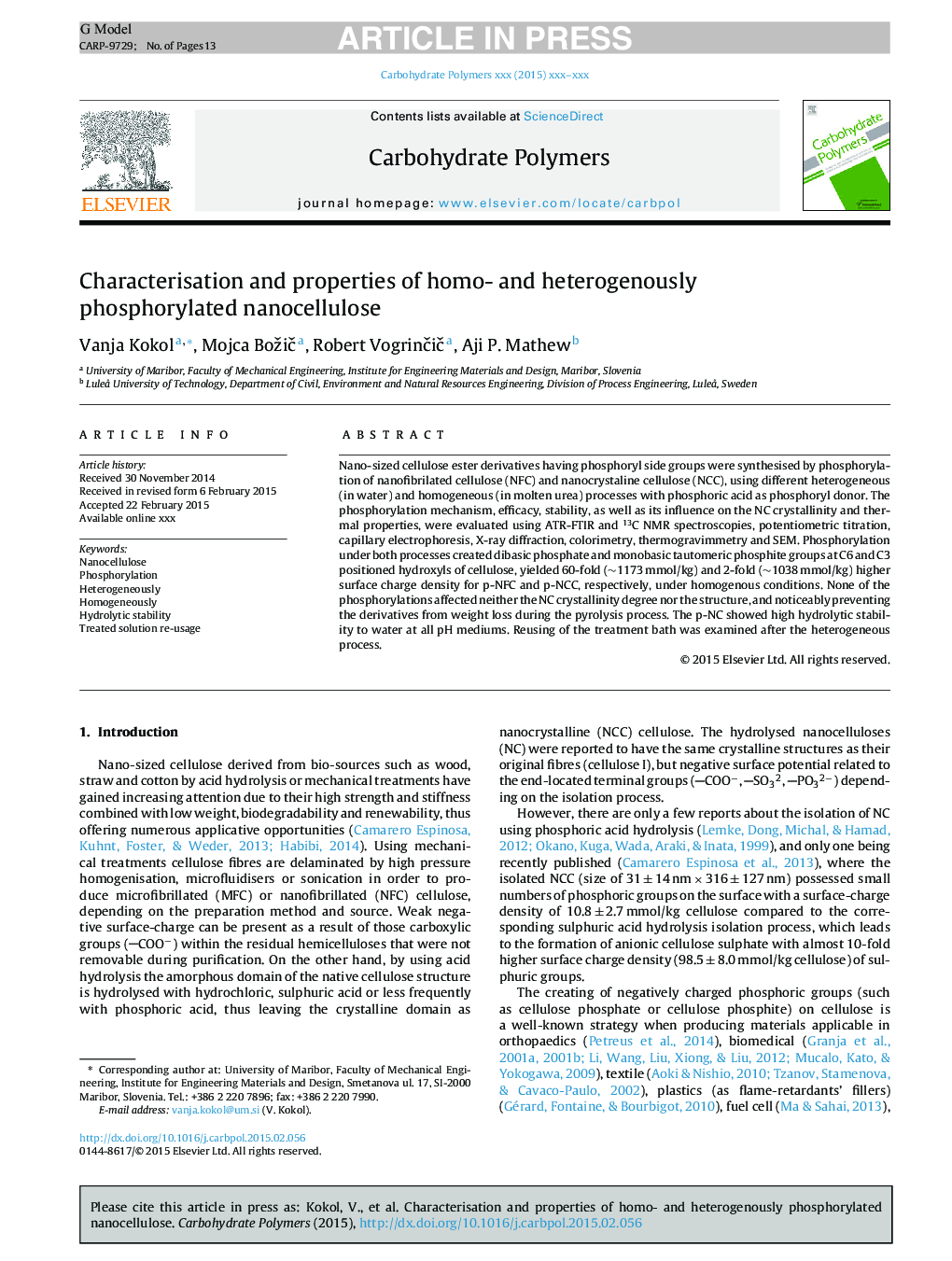| Article ID | Journal | Published Year | Pages | File Type |
|---|---|---|---|---|
| 7788744 | Carbohydrate Polymers | 2015 | 13 Pages |
Abstract
Nano-sized cellulose ester derivatives having phosphoryl side groups were synthesised by phosphorylation of nanofibrilated cellulose (NFC) and nanocrystaline cellulose (NCC), using different heterogeneous (in water) and homogeneous (in molten urea) processes with phosphoric acid as phosphoryl donor. The phosphorylation mechanism, efficacy, stability, as well as its influence on the NC crystallinity and thermal properties, were evaluated using ATR-FTIR and 13C NMR spectroscopies, potentiometric titration, capillary electrophoresis, X-ray diffraction, colorimetry, thermogravimmetry and SEM. Phosphorylation under both processes created dibasic phosphate and monobasic tautomeric phosphite groups at C6 and C3 positioned hydroxyls of cellulose, yielded 60-fold (â¼1173Â mmol/kg) and 2-fold (â¼1038Â mmol/kg) higher surface charge density for p-NFC and p-NCC, respectively, under homogenous conditions. None of the phosphorylations affected neither the NC crystallinity degree nor the structure, and noticeably preventing the derivatives from weight loss during the pyrolysis process. The p-NC showed high hydrolytic stability to water at all pH mediums. Reusing of the treatment bath was examined after the heterogeneous process.
Related Topics
Physical Sciences and Engineering
Chemistry
Organic Chemistry
Authors
Vanja Kokol, Mojca BožiÄ, Robert VogrinÄiÄ, Aji P. Mathew,
